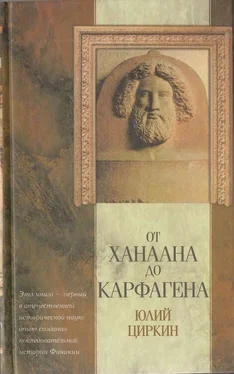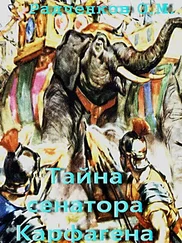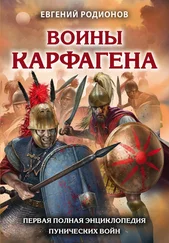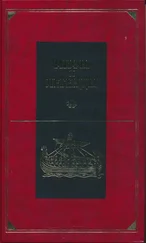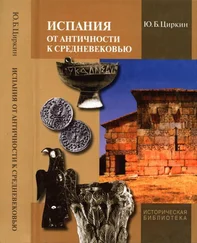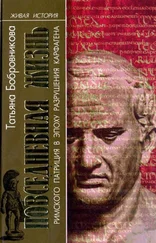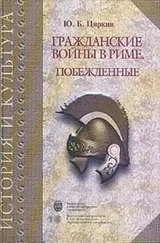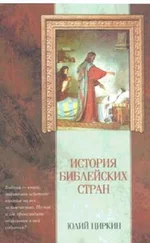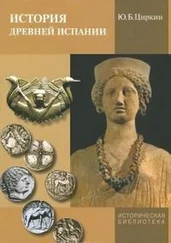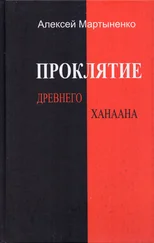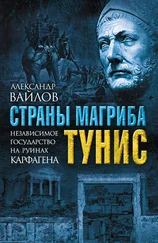Niemeyer H.-G. Phoenician Toscanos as a Settlement Model? // Proceding of the British Academy, 1995. V. 86.
Oates J. Assyrian Chronology, 631–612 В. C. — Iraq, 1965. V. 37.
Oates J. The fall of Assyria. — CAH., 1991- V. III, 2.
Del Olmo Lete G. El continuum cultural canaaneo. Barcelona, 1996.
Ottosson M. Temples and Cult Places in Palestine. Uppsala, 1980.
Pallottino M. El problema de las relaciones entre Cerdena e Iberia en la antiguedad prerromana. // Ampurias, 1952. T. 14.
Pallottino M. Etruscologia. Milano, 196З.
Pallottino M. Scavi nel’santuario etrusco di Pirgi. Conclusione storice. // Archeologia classica, 1964. V. 16.
Pallottino M. Italien vor der Romischenzeit. Mimchen, 1987.
Paraskevaidou H. A The name of Phoenicians: some considerations. // Atti del II congresso internazionale di studi fenici e puniche. Roma, 1991.
Parrot A. Cbehab M. H., Moscati S. Les Pheniciens. Paris, 1975.
Peckham J. B. The Development of the Late Phoenician Scripts. Cambridge, Massachusetts, 1968.
Peckham J. B. The Nora Inscription. // Orientalia, 1972. T. 41.
Perez Rojas M. El nombre de Tartessos. // Tartessos у sus problemas. Barcelona, 1969.
Pettinalo G. I rapporti politici di Tiro con l’Assiria ala luce del «trattato tra Asahaddon e Baal». // RSF, 1975. V. 3, 2.
Pettinato G. II commercio internazionale di Ebla. // State and Temple Economy in the Ancient Near East. Leuven, 1979.
Pettinato G. EblaelaBibbia.// Oriensantiquus, 1980.V. 19, 1.
Petzold K.-E. Die beiden romisch-karthaginische Vertrage und das foedus Cassianum. //Aufstiegund Niedergang der romischen Welt. Berlin; New York, 1972. Bd. I, I.
Pfiffig A. J. Uni-Hera-Astarte. Wien, 1965.
Les Pheniciens. Paris, 1997.
Philipp H. Tamaricium sive Palma. — RE, 1932. Hbd. 8A.
Posener G., BotteroJ., Kenion К. M. Syria and Palestine c. 2160–1780 В. C. // CAH. 1971. V. I, 2.
Pons J. Ezekiel, livre. // Dicctionaire encyclopedique de la Bible. Brepols, 1987.
Ponsich M. Recherches archeologiques a Tanger et sa region. Paris, 1970.
Porpola S. and Watanbe K. Neo-Assyriam Treates and Loyalty Oats. Helsinki, 1988.
Potscher W. Herakles. — Kleine Pauly. 1979. Bd. II.
Prausnitz M. H. Die Nekropolen von Akhziv und die Entwicklung der Keramik vom 10. bis zum 7. Jh. V. Chr. In Akhziv, Samaria und Ashdod. // Phonizier im Westen. Mainz, 1982.
Preisendanz K. Tanit. //RE. 1932. Hbd. 8A.
Preisendanz K. Melkart. // RE. 1935. SptBd. III.
Pritchard J. B. The Phoenicians in the Their Homeland. // Expedition, 1971. V. 14, 1.
Pritchard J. B. The Tanit Inscription from Sarepta. // Phonizier im Westen. Mainz, 1982.
Puech E. Le rite d’offrande de chevaux d’apres une inscription phenicienne de Kition vers 800 avant notre ere. // RSF, 1976. V. 4, 1.
Puech E. Les premieres emission biblites et les rois de Byblos a la fin du Ve siecle avant J.-C. // Atti del II congresso internazionale di studi fenici e punichi. Roma, 1991.
Raban A. Stieglitz R. The Sea Peoples and their Contribution to Civilization. // Biblical Archaeological Review, 1991. V. 17, 6.
Rochet G. Dicctionaire de l’archeologie. Paris, 1983.
Ramon J. Las anforas punicas de Ibiza. Eivissa, 1991.
ReadeJ. E. The Neo-Assyrian Court and Arme: Evidence from Sculpture. // Iraq, 1972. V. 34.
Rebuffat R. Une batalle navale au VIII siecle. // Semitica, 1976. T. 26.
Reviv H. On urban representative institutions selfgovernement in Syria-Palestine in the second half of the second miIIennium В. C. // JAOS, 1969. V. 12, 3.
Rey-Coquais J.-P. Arados et sa Peree. Paris, 1974.
Rey-Coquais J.-P. Une double dedicace de Lepcis Magna a Tyr.// LAfrica Romana. Atti del IV congresso di studi. Sassari, 1986.
Reyes A. T. Archaic Cyprus. Oxford, 1994.
Ribichini S. Una tradizione sul fenicio Sid. // RSF, 1982. V. 10, 2.
Ribicbini S. Questions de mythologie phenicienne d’apres Philon de Byblos. // Religio Phoenicia. Namur, 1986.
Ridgway D. Archaeology in Sardinia and Etruria, 1974–1979. // Archaeological Reports for 1979–1980, 1980. № 26.
Rocco B. La Grotta Regina (Palermo). // Annali, 1969. T. 19 (29).
Rollig W. Die Phonizier des Mutterlandes zur Zeit der Kolonisierung. // Phonizier im Westen. Mainz, 1982.
Ruiz Mata D. La colonizacion fenicia. // Historia de Espana. Madrid, 1989. T. II.
Ruiz Mata D. El periodo cartagines de la colonizacion punica. // Historia de Espana. Madrid, 1989. T. II.
Ruiz Mata D., Perez C. J. El poblado fenicio del CastIIIo de Dona Blanca. Puerto de Santa Maria, 1995.
Sader H. Den Ruinen entsteigt die Vergangenheit. Archaologie in Beirut. — Antike Welt, 1997. Jahrg. 28, 5.
Safren J. D. New Evidence for the Title of Provincial Governor at Mari. // Hebrew Union College Annual, 1979. V. 50.
Said-Zamit G. F. The Punic Tombs of the Maltese Islands. // RSF, 1997. V. 25, 2.
Sallmann K. Plinius 1. // Kleine Pauly, 1979. Bd. IV.
Salviat F. Lions d’ivoire a Thasos. I BCH, 1962. T. 86.
Sasson I. M. Cananit Maritime Involvement. // TAOS, 1966.V.86, 2.
Scandone-Mattiae G. Inscriptions royales egyptiennes de l’ancien empire a Ebla. // Mesopotamien und seine Nachbam. Berlin, 1982.
Scandone-Mattiae G. Hathor signora di Biblo e la Baalat Gebal. 11 Atti del II Congreso internazionale di studi fenici e punice. Roma, 1991.
Scandone G. Testimonianze egiziane in Fenicia dal XII al IV sec. a. C // RSF, 1984. V. 12, 2.
Schiffmann I. Zur Interpretation IFPCO 36 und 39 aus Sardinien. // RSF, 1976. V. 4, 1.
Schretter M. K. Alter Orient und Hellas. Insbruck, 1974-
Schubart H. Phonizische Niederlassungen auf der Iberischen Halbinsel. // Phonizier im Westen. Mainz am Rhein, 1982.
Schubart H. Asentamientos fenicios en la costa meridional de la Peninsula Iberica. // Huelva VI. Huelva, 1986.
Schubart H., NiemeyerH.-G. Toscanos. Mainz, 1975.
Schulten A. Tartessos. Hamburg, 1950.
Schwarzenbach A. Die geographische Terminologie des Alten Testaments. Leiden, 1954.
Segert S. A Grammar of Phoenician and Punic. Munchen, 1976.
Seston W. Remarques sur les institutions politiques et sociales de Carthage d’apres une inscription latine de Thougga. // CRAI, 1967.
Seyrig H. Statuettes trouvees dans les montagnes du Liban. — Syria, 1953. T. 30.
Shedletski L. and Levine B. The msr of the Sons and Daughters of Ugarit. // Revue Biblique, 1999. T. 106, 3.
Singer I. The «Land of Amurru» and the «Lands of Amurru» in the Sausagamuva Treaty. // Iraq, 1991. V. 53.
Snodgrass A. Archaic Greece. Berkeley and Los Angeles, 1981.
Soergel E. Die Tierknochen aus der altpunischen Faktorei von Toscanos. // Madrider Mitteilungen, 1968. Bd. 9.
Sold Sole J. M. Miscelanea punico-hispana I. // Sefarad, 1956. An. 16.
Sold Sole J. M. La inscripcion рйпіса Hispania 10. // Sefarad, 1961. An. 25.
Sold Sole J. M. Nueva inscripcion fenicia de Espana. // Rivista degli Studi Orientali, 1966. V. 41.
Sollberg Е. Byblos sous les rois d’Ur. // Archiv fur Orientforschung, 1959–1960. Bd. 19.
Soyez B. Byblos et la fete des Adonies. Leiden, 1977.
Stayer L. E. Carthage: A View from the Tophet. // Phonizier im Westen. Mainz am Rhein, 1982.
Stem E. New Evidence from Dor for the First Appearance of the Phoenicians along the Northern Coast of Israel. // BASOR, 1990. № 279.
Stem E. Hazor, Dor and Megiddo in the Time of Ahab and under Assyrian Rule. — Israel Exploration Journal, 1990. V. 40, 1.
Stieglitz R. The Geopolitics of the Phoenician Littoral in the Early Iron Age. // BASOR, 1990. № 279.
Stieglitz R. The City of Amurru. //JNES, 1991. V. 50, 1.
Stoll. Melikertes. — Ausfiihrliches Lexikon der griechischen und romischen Mythologie. Leipzig, 1894–1897. Bd. II, 2.
Читать дальше
